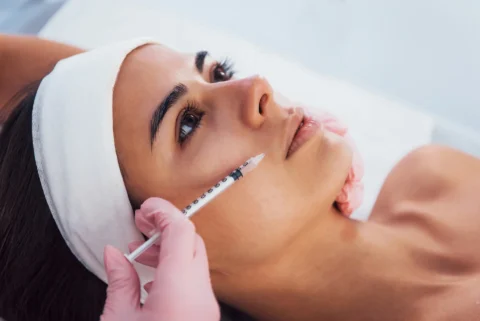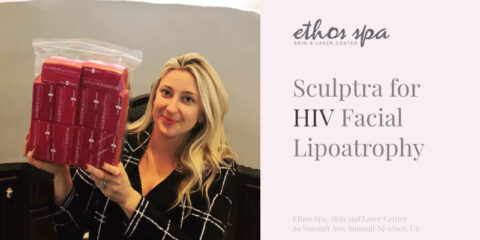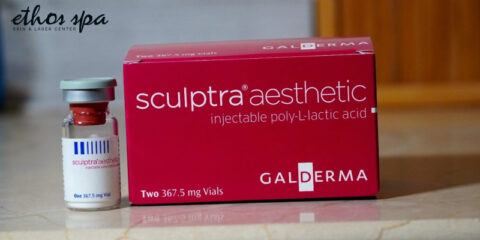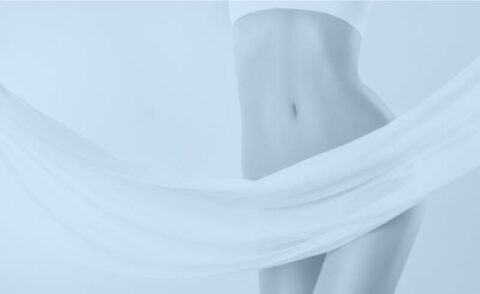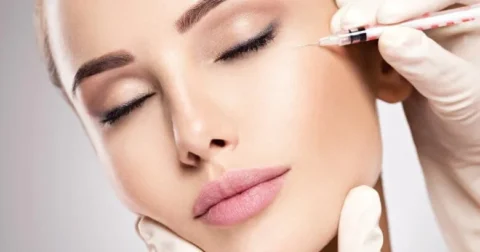Injectable fillers are popular cosmetic procedures because they are non-invasive and require no downtime but can achieve amazing results for facial enhancement. Sculptra and Restylane are two injectable products that work well on patients who want to restore lost volume to their faces.
So which is better for you: Sculptra or Restylane? The answer depends on what you want to achieve. For a long-lasting solution to major volume loss that takes effect gradually, Sculptra is the better product. However, if you want to treat superficial lines, wrinkles, and creases immediately, Restylane is more ideal. Both injectables can even be used to complement each other as treatments.
Sculptra vs Restylane: What Makes Them Different?
Sculptra and Restylane are two big favorites among all cosmetic injectables. Both products are FDA-approved and have a good reputation for achieving desired results. However, Sculptra and Restylane have a different approach to filling in facial volume loss.
Sculptra
Sculptra is technically not a dermal filler. Rather, it is a biostimulant made with poly-L-lactic acid (PLLA), a polyester commonly used in bone screws and dissolvable stitches. Poly-L-lactic acid triggers the immune system response once this foreign substance is injected in the body. The PLLA microparticles get surrounded by fibroblasts which stimulate collagen production in the treatment area.
After your initial Sculptra injection, you will see some immediate effects which last one or two days until the internal inflammation dies down. Over the course of eight weeks, patients will notice gradual changes as the college continues to grow under the skin. Your friends and family will notice you look better but won’t be able to pinpoint what changed.
Sculptra is best used to address volume loss in the whole face. Aside from boosting collagen and restoring volume in “sunken” facial areas, Sculptra can correct superficial to severe wrinkles and nasolabial folds.
Restylane
Restylane is an excellent product for treating specific areas of the face, including cheeks, lips, dark under-eye circles, and fine to moderate lines. It is formulated with hyaluronic acid (HA), a sugar naturally found in the human body. Hyaluronic acid is responsible for holding moisture and keeping the skin, eyes, and joints hydrated.
The hyaluronic acid in Restylane works by attracting the moisture in the body towards the treatment site. As water is drawn towards the dermal filler and stays there, areas with little volume become plump again. Restylane is designed for patients who want immediate results.
Which Is The Better Filler For You?
For Sculptra and Restylane, their PLLA and HA ingredients are both biocompatible and biodegradable. This means that the human body can accept the synthetically produced materials without too many side-effects then absorb and eventually dissolve the ingredients until they disappear completely.
Some cosmetic surgeons like to combine Sculptra and Restylane in a patient’s treatment plans because using both can better achieve the desired results. However, it’s usually a this-or-that scenario so it’s good to compare the products to see which is better for you:
| Cost | Treatment Areas | Side Effects | Results | Number of Sessions | |
| Sculptra | The average cost of Sculptra is around $500 – $1500, depending on your geographic location and physician fees. | As Sculptra works at a much deeper level, it’s most suitable to treat areas with severe volume loss. | You can expect mild side effects such as bruising, pain, swelling, redness, itching, lumps, and skin discoloration. | Sculptra results can last up to 2 – 3 years and is considered a semi-permanent cosmetic treatment. | You may need 2 – 4 sessions with 4 – 5 injections each, depending on what your goals are. |
| Restylane | The price of Restylane depends on how many syringes of filler you will need. Most procedures fall between $300 and $800. | Restylane is ideal for filling in ‘thin’ treatment areas like the lips and under the eyes. It also works best on superficial to moderate wrinkles. | With Restylane, side effects like swelling, redness, bruising, tenderness, itching, or pain may occur at the injection site. | On average, the results of Restylane can last for 3 – 18 months, depending on the concentration of hyaluronic acid in the formula. | As Restylane results can be seen immediately, you will only need 1-2 sessions. You may have touch-up sessions if you want to maintain your look. |
Alternatives To Sculptra and Restylane
If neither Sculptra or Restylane are the right products that can meet your goal, other facial fillers available may be more suited to your needs. Juvederm, Radiesse, and Belotero are some filler alternatives you might prefer.
Juvederm
Much like Restylane, Juvederm is a hyaluronic acid-based dermal filler designed to address facial signs of aging. There are several products in the Juvederm line which have different concentrations and bonding of HA so they can better target specific problems, such as:
- Juvederm Voluma XC is created to add volume underneath the cheeks.
- Juvederm Ultra XC and Volbella XC can be used for nonsurgical lip enhancements.
- Juvederm Ultra Plus XC and Vollure XC work best on wrinkles and lines around the mouth and nose. These products can also improve skin elasticity.
On average, the cost of a Juvederm injection will be around $600. The price of a Juvederm session will vary on your cosmetic surgeon’s expertise, geographic location, and the number of Juvederm syringes used.
Radiesse
Radiesse is an injectable filler which can plump up wrinkled or folded areas of the skin, especially the areas surrounding the nose and mouth. It can also be used to fill in wrinkled skin around the hands.
Radiesse is made with calcium hydroxyapatite (CaHA) gel microspheres, which combine phosphate and calcium elements that stimulate collagen production. The hydrogen, oxygen, and carbon in the gel create a scaffold that mimics connective tissues and collagen. When the CaHA is absorbed back into the body, it leaves the collagen in its place.
At around $650 – $800 per syringe, Radiesse can seem more costly if you need to treat more than one area. However, results can last for up to two years so Radiesse may be more cost-efficient than hyaluronic fillers in the long-run.
Belotero
Belotero is another dermal filler with a hyaluronic acid base, which means it can bind with water and plump up the skin to make it look smoother. The original Belotero formula was created to address moderate and severe laugh lines (or nasolabial folds).
Since expanding, Belotero also has Belotero Soft for very fine lines and Belotero Volume for restoring volume to the lips, nose, cheeks, and chin. Much like other HA-based fillers, Belotero prices fall around the $600 range.
Let The Experts At Ethos Spa Help You Decide
It can be difficult to determine which dermal filler will work best for you and accomplish what you want. You definitely need to consult with an expert beforehand because maybe you don’t really need a filler after all.
At Ethos Spa, we can craft a personalized treatment plan for you so you can meet your beauty goals. As the leading medical spa in NJ, we prioritize the concerns our patients want to resolve and ensure they receive the best experience possible. Book a consultation with Ethos Spa today.
Learn more: How Long Does It Take to See Results from Restylane?


